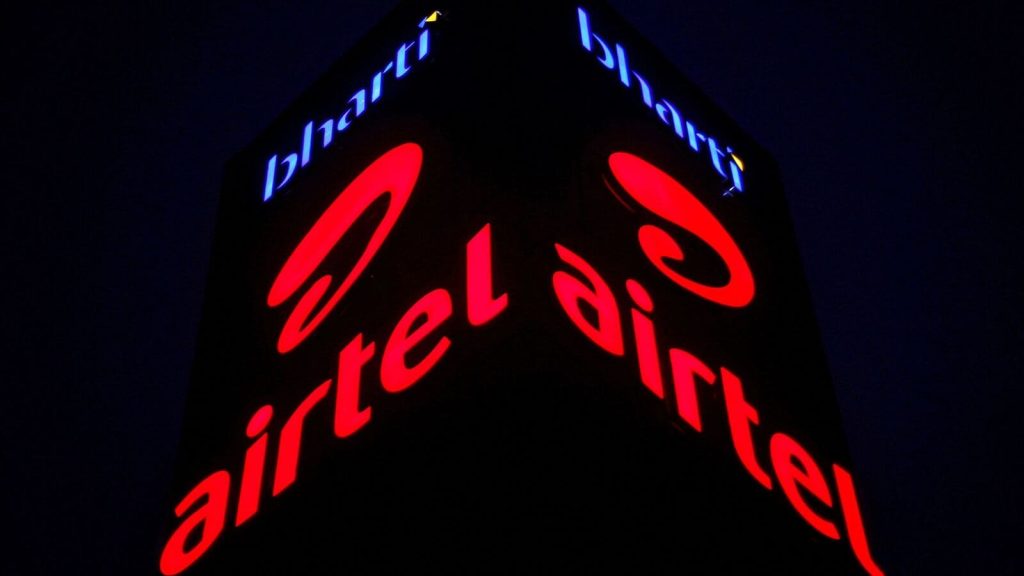Instead of chasing, the country’s second-largest telecom operator is curating growth—incrementally shifting toward services that would deepen customer engagement and further drive premiumization, according to experts.
The Gopal Vittal-led management teased their efforts to integrate artificial intelligence (AI) into the core of its digital portfolio services during its June-quarter earnings call.
And its latest partnerships with Perplexity AI, Google Cloud, and global telcos via Xtelify show it has already embarked on the AI journey, albeit a long one.
But beyond the marketing upside and user engagement, experts remain uncertain of the actual revenue contribution of such moves. “There is no immediate clarity on conversion rates from free trials to paid services or how fast these will scale as new revenue streams,” Vivekanand Subbaraman, lead telecom analyst at financial advisory firm Ambit Capital, told Mint.
Nonetheless, with 5G-related capital expenditure mostly behind it, the telecom operator is now directing its money towards an expanding portfolio of digital services—home, mobile, financial, and enterprise services.
Just a shadow of legacy business
But Sumanta Khan, equity fund manager at Edelweiss Mutual Fund, pointed out that none of these avenues are big enough to overshadow the legacy telecom segment, at least in the medium term. This means any future re-rating of Airtel’s stock would depend more on telecom tariff hikes and subscriber metrics than its digital diversification.
“With limited new entrant risk, Airtel’s premiumization and growth opportunities in the telecom business will only deepen from here on,” Piyush Pandey, telecom, internet, and IT analyst at Centrum Broking, said. “But, its current valuations are already above its historic levels, leaving limited room for upside.”
Interestingly, despite reporting the highest average revenue per user (Arpu) in the industry at ₹250, Airtel’s sequential Arpu growth was flat in the June quarter. This indicates that the telco’s premiumization strategy is starting to plateau in the absence of broad tariff hikes.
Rather, its home-services segment, which includes broadband, direct-to-home (DTH), and smart-home solutions, outperformed all other verticals to grow almost 8% sequentially. The company added a record 939,000 broadband users in the first quarter of 2025-26—its highest ever.
Now, its management aims to raise quarterly net home-services additions to 2.5 million from the current 1.6 million run rate. To be sure, the telecom operator’s growth in home services has been led by broadband, as its DTH service growth has remained flat to declining in many quarters.
In fact, as seen from its failed attempt to acquire Tata Sons’ DTH business, Tata Play, the company’s bets haven’t always paid off.
Telecom business still earns the bread
Airtel’s digital services ambitions hinge on aggressive premiumization of its telecom business. But experts pointed out that without an industry-wide tariff hike or sharp postpaid conversion, Arpu expansion may lose momentum.
The company’s postpaid base now accounts for 7% of the subscriber mix, and it added 4 million 4G/5G users in the quarter. While Jio’s additions were significantly higher at 9.9 million, experts believe it can more comfortably pass on higher tariffs to its customers and maintain its lead in profitability.
“Since Airtel’s customer base is predominantly premium, it can easily charge higher prices for 4G and postpaid users,” Centrum’s Pandey said. “We expect its free cash flow to increase sharply following any future tariff hikes because its capex is also stabilizing.”
In fact, as the telco reduces its debt burden, management stated in the earnings call that current cash flows can even cover adjusted gross revenue (AGR) dues as and when they arise. Hence, their focus now is to ensure the company’s transition into a digital experience orchestrator, from a mere telecom service provider.
“This pivot isn’t just strategic. It’s philosophical, as high-quality and reliable connectivity and digital services are no longer utilities. They are now lifestyle services,” Edelweiss Mutual Fund’s Khan said.
Where Jio is building a vertically integrated ecosystem—bundling connectivity with proprietary content and apps—Airtel is taking a more open, modular, and customer-centric approach.
“Airtel is more keen on offering the best product in the market to customers,” Ambit’s Subbaraman said. “They are not trying to own everything. They are ensuring the customer owns more value.”
AI is a mere value add as of yet
The company’s latest AI and cloud bundling strategies underscore this ethos. It is offering its users free 12-month access to Perplexity AI’s generative search assistant and 100GB of Google One cloud storage for six months.
“It is an incredible free marketing and publicity opportunity for Airtel,” Subbaraman said. “Everyone’s offering Apple TV or Hotstar. But this is different. It’s a first to the market.”
Interestingly, experts noted that its pivot to digital value addition isn’t an overnight shift. Much of its AI and cloud infrastructure, which it’s now monetizing, was built years ago. “Airtel has a digital talent of 2,840 people, including data scientists and analysts. These tools were engineered in 2021 and have been used internally for four years,” Subbaraman added.
This has also enabled the telco to transform into a cloud infrastructure exporter—not just for Indian enterprises, but for telecom peers in emerging markets. In recent months, its Xtelify arm signed agreements with Singapore’s Singtel and the Philippines’s Globe Telecom to provide them with infrastructure-as-a-service, AI-driven customer support tools, churn analytics, and modular edge-compute capabilities.
According to Centrum’s Pandey, these ventures can provide good incremental revenue as they benefit from high operating leverage. But he also cautioned that Bharti’s domestic enterprise growth has been muted, as it let go of certain low-margin segments along with a broader slowdown in technology spending.


